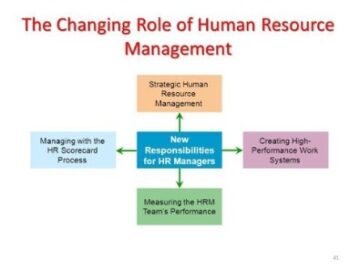Journal Entries for Dividends Declaration and Payment

He has been the CFO or controller of both small and medium sized companies and has run small businesses of his own. He has been a manager and an auditor with Deloitte, a big 4 accountancy firm, and holds a degree from Loughborough University. In order to get expert accounting advice on how to record the transaction, I highly recommend consulting an accounting specialist for expert advice.
- On that date the current liability account Dividends Payable is debited and the asset account Cash is credited.
- For example, assume an investor owns 200 shares with a market value of $10 each for a total market value of $2,000.
- Because financial transactions occur on both the date of declaration (a liability is incurred) and on the date of payment (cash is paid), journal entries record the transactions on both of these dates.
- The practice can cast doubt on the company’s management and subsequently depress its stock price.
- The best example of an accrued dividend is when a company declares its shareholders a quarterly or yearly dividend, but the actual cash for payment is not paid until the following quarter or year.
- For example, on December 31, the company ABC receives a cash dividend from one of its stock investments.
This is the date that dividend payments are prepared and sent to shareholders who owned shares on the date of record. The related journal entry is a fulfillment of the obligation established on the declaration date – 30th July; it reduces the Dividends Payable account (with a debit) and the Cash account (with a credit). The company usually needs to have adequate cash and sufficient retained earnings to payout the cash dividend. This is due to, in many jurisdictions, paying out the cash dividend from the company’s common stock is usually not allowed. And of course, dividends needed to be declared first before it can be distributed or paid out. Cash dividend is a distribution of earnings by cash to the shareholders of the company.
Comparing Small Stock Dividends, Large Stock Dividends, and Stock Splits
The total stockholders’ equity on the company’s balance sheet before and after the split remain the same. A stock split is much like a large stock dividend in that both are large enough to cause a change in the market price of the stock. Additionally, the split indicates that share value has been increasing, suggesting growth is likely to continue and result in further increase in demand and value. It must also be noted that in the case of stock dividends that are paid, market capitalization or shareholder wealth does not change. A dividend is a distribution of a portion of a company’s earnings, decided by its board of directors, to a class of its shareholders. Dividends can be issued in various forms, such as cash payments, stocks or other securities.
The date of payment is the date that payment is issued to the investor for the amount of the dividend declared. There won’t be a temporary account, such as the dividend decleared account, in the journal entry of the dividend declared in this case. Hence, the company does not have a record of the dividend declared during the accounting period as the amount of the dividend declared will directly what is a cash receipts journal definition meaning example deduct the balance of the retained earnings. When stock dividends are declared, the amount is debited equivalent to the amount generated by multiplying the current stock price by the shares outstanding by the dividend percentage. The main rationale behind companies issuing stock dividends is to reserve cash. This is because instead of reducing cash, the number of shares is increased.
How do Stock Dividends impact the financial statements?
Dividends can be defined as the share of profits that are paid to the investors or the shareholders of the company in return for their investment in the particular company for a period of time. Since shareholders are technically the owners of the company, they are compensated through a profit-sharing, on an annual, semi-annual, or quarterly basis. The announced dividend, despite the cash still being in the possession of the company at the time of the announcement, creates a current liability line item on the balance sheet called “Dividends Payable”.
Accrual accounting requires that you recognize the liability for cash payments in the period that the dividend is declared, even if the payment is not issued until the next accounting period. Understanding how to record cash dividend payments is essential to keeping your financial reports accurate, including reports of stockholders’ equity. Instead, the company prepares a memo entry in its journal that indicates the nature of the stock split and indicates the new par value. The balance sheet will reflect the new par value and the new number of shares authorized, issued, and outstanding after the stock split. To illustrate, assume that Duratech’s board of directors declares a 4-for-1 common stock split on its $0.50 par value stock.
Declared Dividends
Cash Dividends are mostly paid by companies in order to provide a return to the shareholders as a result of their investment. Therefore, cash dividends mostly impact cash, as well as shareholder equity accounts. Since they are ‘declared’ and not yet paid, dividends declared are treated as a Current Liability in the financial statements of the company. Since it is a short-term obligation, it makes sense for companies to record it as current liabilities in the financial statements of the company. Dividends are mostly declared by the board of directors of the company in annual general meetings before they are paid out. In most cases, the declaration date differs from the payout date, and therefore, relevant journal entries need to be made in order to reflect these changes in the financial statements of the company.
As the number of shares increases, the price per share decreases accordingly because the market capitalization must remain the same. The date of record determines which shareholders will receive the dividends. There is no journal entry recorded; the company creates a list of the stockholders that will receive dividends. In this journal entry, the balance of the retained earnings will reduce by the total amount of dividend declared as of the dividend declaration date.
What is the declaration date for a dividend?
By lowering the share price through a stock dividend, a company’s stock may be more “affordable” to the public. A company that does not have enough cash may choose to pay a stock dividend in lieu of a cash dividend. In other words, a cash dividend allows a company to maintain its current cash position. The company pays out dividends based on the number of stock shares it has outstanding and will announce its dividend as a certain amount per share, such as $1.25 per share. When paying dividends, the company and its shareholders must pay attention to three important dates. To see the effects on the balance sheet, it is helpful to compare the stockholders’ equity section of the balance sheet before and after the small stock dividend.
Prospect Capital: Attractive Dividend Yield Not Worth The Risk … – Seeking Alpha
Prospect Capital: Attractive Dividend Yield Not Worth The Risk ….
Posted: Mon, 31 Jul 2023 12:11:52 GMT [source]
The company’s board of directors has announced the dividend payment after a month. The company has the obligation to make payments to shareholders based on the dividend declaration. In this case, the journal entry at the dividend declaration date will not have the cash dividends account, but the retained earnings account instead. Assuming there is no preferred stock issued, a business does not have to pay dividends, there is no liability until there are dividends declared.
What are Journal Entry Examples of Dividends Payable?
If a shareholder expects to receive payment after one year, then it is classified as a long-term liability. In this journal entry, the $18,000 of the dividend received is not recorded as the dividend income but as a decrease of stock investments instead. After this journal entry, total assets on the balance sheet and total revenues on the income statement of the company ABC will increase by $5,000. As the normal balance of stock investments is on the debit side, this journal entry will decrease the stock investments by the amount of the dividend received by the company. For this reason, shareholders typically believe that a stock dividend is superior to a cash dividend – a cash dividend is treated as income in the year received and is, therefore, taxed. It is useful to note that the record date is the date the company determines the ownership of the shares for the dividend payment.
Healthpeak Properties Reports Second Quarter 2023 Results and … – PR Newswire
Healthpeak Properties Reports Second Quarter 2023 Results and ….
Posted: Thu, 27 Jul 2023 20:15:00 GMT [source]
This is usually the case in which the company doesn’t want to bother keeping the general ledger of the current year dividends. As the business does not have to pay a dividend, there is no liability until there is a dividend declared. As soon as the dividend has been declared, the liability needs to be recorded in the books of account as a dividend payable. The company is required to record the liability when the board of directors declares the dividend. There is no journal entry recorded; the company creates a list of the shareholders that will receive dividends.
For the holding of more than 50% of shares, the company will become a parent company where the investee company that it has invested in becomes the subsidiary company. In this case, the company will need to prepare consolidated financial statements where they present all assets, liabilities, revenues, and expenses of subsidiary companies. The market may perceive a stock dividend as a shortage of cash, signaling financial problems. Market participants may believe the company is financially distressed, as they do not know the actual reason for management issuing a stock dividend. The journal entry to distribute the soft drinks on January 14 decreases both the Property Dividends Payable account (debit) and the Cash account (credit).

For example, a 1-for-3 stock split is called a reverse split since it reduces the number of shares of stock outstanding by two-thirds and triples the par or stated value per share. A primary motivator of companies invoking reverse splits is to avoid being delisted and taken off a stock exchange for failure to maintain the exchange’s minimum share price. Likewise, this journal entry of dividend declared that the company record will increase total liabilities while decreasing total equity on the balance sheet. For example, on December 20, 2019, the board of directors of the company ABC declares to pay dividends of $0.50 per share on January 15, 2020, to the shareholders with the record date on December 31, 2019. Dividend is usually declared by the board of directors before it is paid out.
For example, if the company ABC in the example above does not have the dividend declared account, it can directly deduct the amount of dividend declared from the retained earnings account. This journal entry of recording the dividend declared will increase total liabilities by $100,000 while decreasing the total equity by the same amount of $100,000. Of course, the board of directors of the company usually needs to make the approval on the dividend payment before it can declare and make the dividend payment to the shareholders. And the company usually needs to have sufficient cash in order to pay the dividend to its shareholders.




Leave a Reply